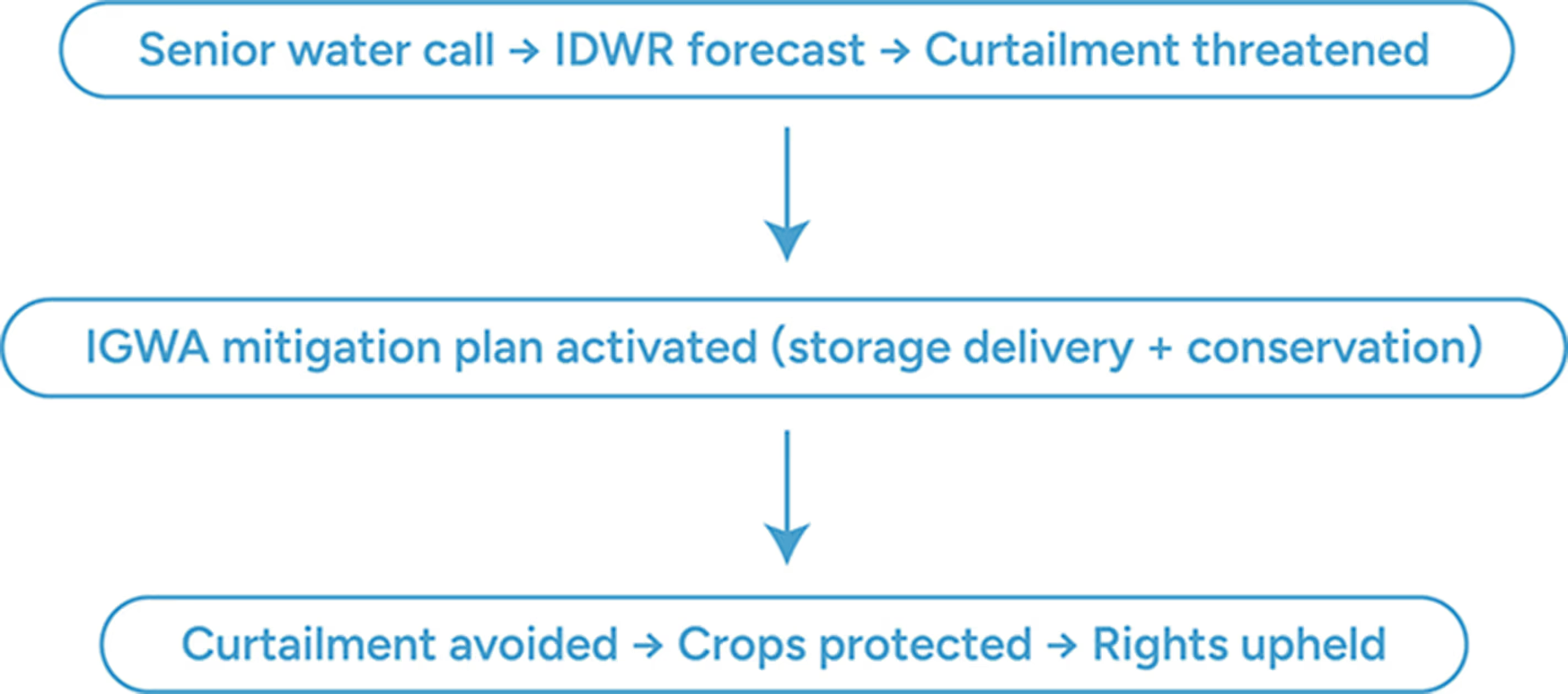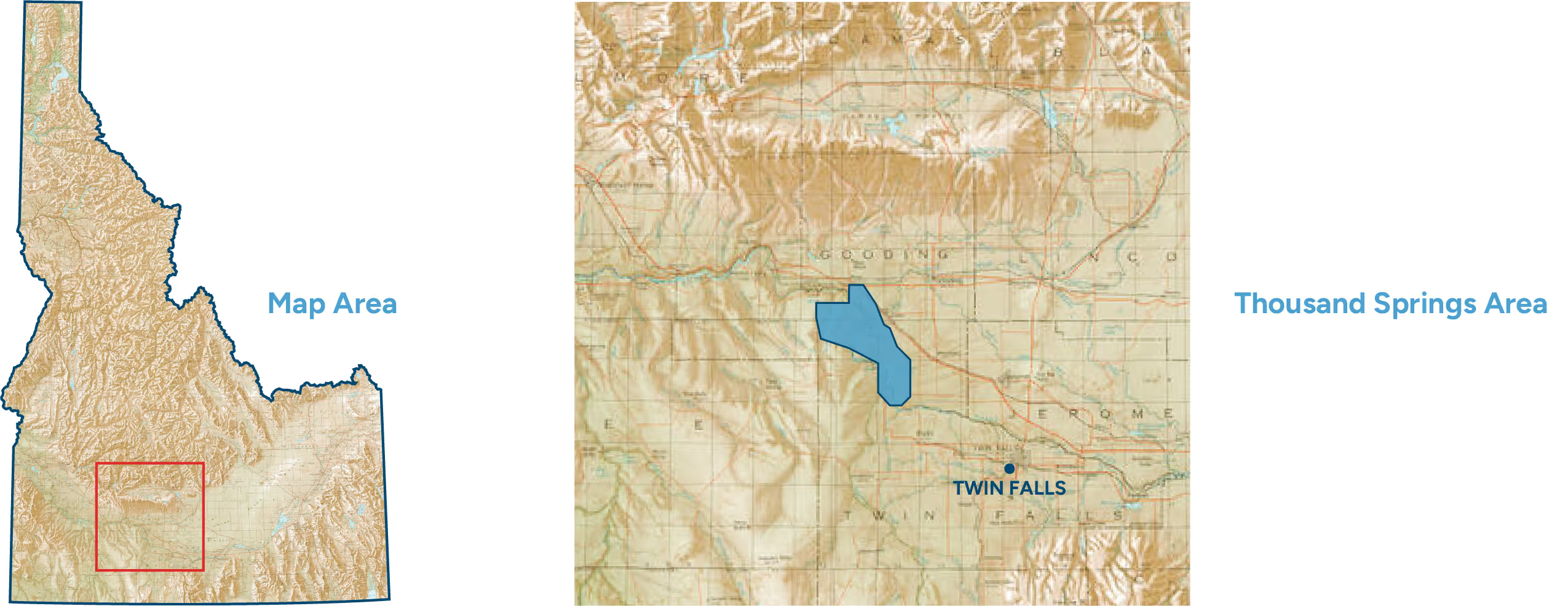The Eastern Snake Plain Aquifer is Idaho’s largest water source, stretching across 10,800 square miles and 16 counties. Beneath the surface, it contains an estimated 1 billion
acre-feet of water, roughly equivalent to the fourth-largest Great Lake, Lake Erie. This makes it one of the most productive aquifers in the world.
This hidden resource fuels life across the state, supplying water to 1.1 million acres of farmland, dozens of cities, hundreds of businesses and nearly half a million Idahoans. It also powers the economy, supporting about one-fifth of all goods and services produced in Idaho and contributing roughly $10 billion each year.





